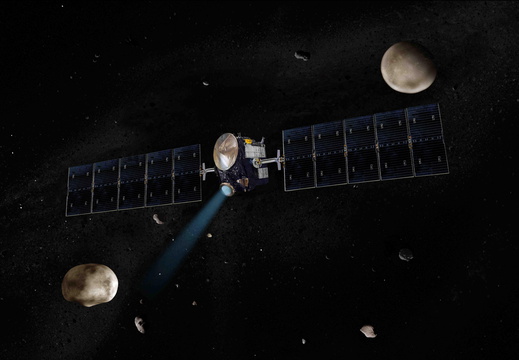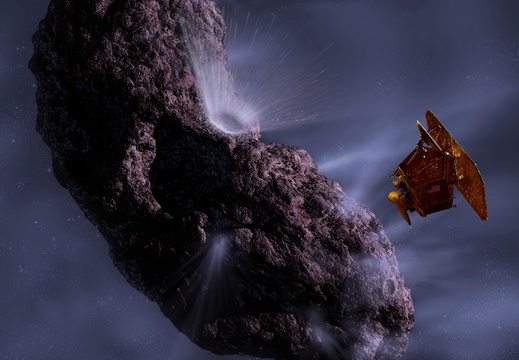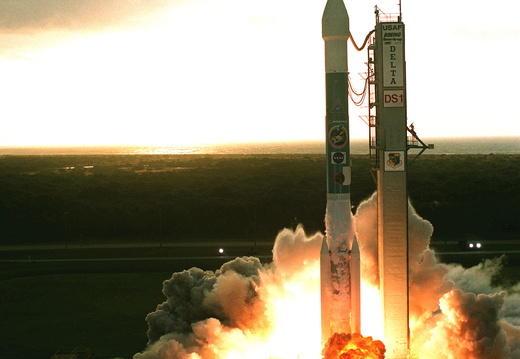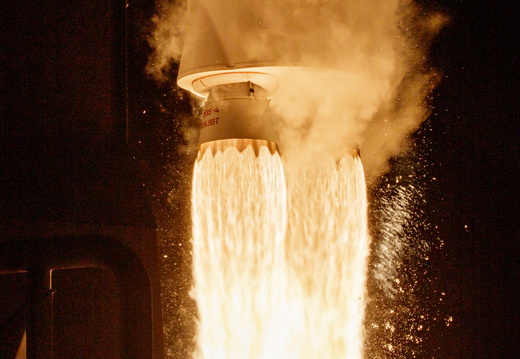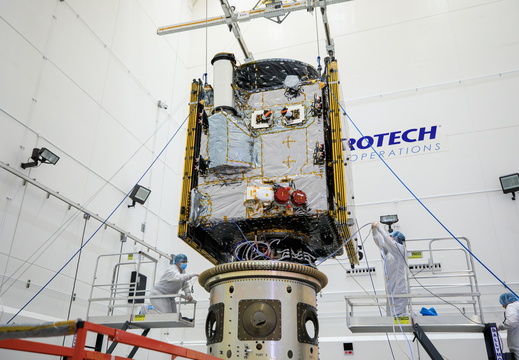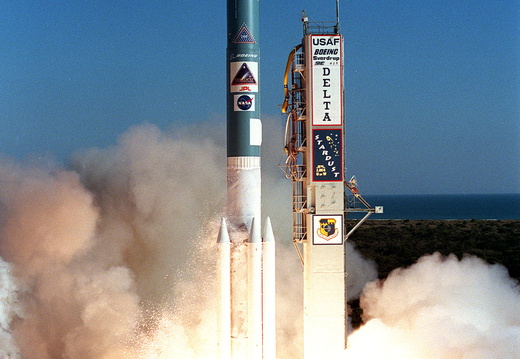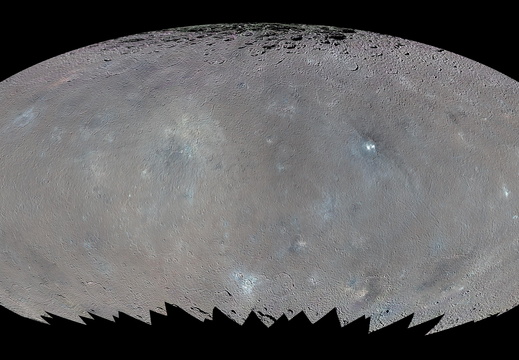
DAWN
Part of NASA’s Discovery Program, Dawn is a mission to the two most massive bodies in the main asteroid belt – Vesta and Ceres. These diverse worlds offer scientific snapshots of the early solar system. Vesta is rocky, while dwarf planet Ceres is icy. Each followed a very different evolutionary path, constrained by the diversity of processes that operated during the first few million years of the solar system. When Dawn visited Ceres and Vesta, the spacecraft brought us back in solar system time.
By using the same instruments to study diverse destinations, Dawn revealed new insight into the early solar system. A mission in NASA's Discovery Program, Dawn orbited and explored the protoplanet Vesta in 2011-2012, and it has been in orbit around a second new world, dwarf planet Ceres, since March 2015. Propelled by an efficient ion engine, Dawn delved into the unknown and achieved what's never been attempted before: it is the first mission to orbit an object in the main asteroid belt, the first to visit a dwarf planet, and the first to orbit two targets.
Dawn is currently in its second extended mission at Ceres, in an elliptical orbit that goes as low as 22 miles above Ceres’ surface.
Major Engineering Achievements: First space mission to orbit two destinations Record-breaking use of solar-electric propulsion: 25,700 mph, 2.7x any prior spacecraft and nearly equal to the velocity provided by Dawn’s Delta launch vehicle Active powered flight: 5.9 years (54% of the time in space as of Sep. 7, 2018) Key Mission Findings:Dawn orbited Vesta for more than a year, from July 2011 to September 2012. Its investigation confirmed that Vesta is the parent of the HED (howardites, eucrites, and diogenites) meteorites, which Dawn connected to Vesta’s large south polar basin, a priceless cosmic connection between samples in hand and a singular event on a small planet. Vesta is small enough (about the same size as Saturn's moon Enceladus) to have been deeply scarred by the Rheasilvia impact that launched the HEDs, but large enough to have differentiated into an iron core, silicate mantle, and igneous crust. Dawn also found hydrated and carbon rich material on its surface supplied by impactors, a result that was unexpected based on pre-Dawn telescopic observations.
After its escape from Vesta and its journey onward, Dawn entered orbit around Ceres in March 2015. Dawn discovered that the inner solar system’s only dwarf planet was an ocean world where water and ammonia reacted with silicate rocks. As the ocean froze, salts and other telltale minerals concentrated into deposits that are now exposed in many locations across the surface. Dawn also found organics in several locations on Ceres’ surface.
Partners:The Jet Propulsion Laboratory manages Dawn’s mission to Vesta and Ceres for NASA's Science Mission Directorate in Washington. Dawn is a project of the directorate's Discovery Program, managed by NASA's Marshall Space Flight Center in Huntsville, Alabama. UCLA was responsible for Dawn’s prime mission science. JPL is responsible for Dawn’s extended mission science. Northrop Grumman in Dulles, Virginia designed and built the spacecraft. JPL is managed for NASA by Caltech in Pasadena. The Max Planck Institute for Solar System Research, Gottingen, Germany, provided the framing cameras with significant contributions by the German Aerospace Center (DLR) Institute of Planetary Research, Berlin, and in coordination with the Institute of Computer and Communication Network Engineering, Braunschweig. The visible and infrared mapping spectrometer was funded and coordinated by the Italian Space Agency and built by SELEX ES, with the scientific leadership of the Institute for Space Astrophysics and Planetology, Italian National Institute for Astrophysics, Italy, and is operated by the Institute for Space Astrophysics and Planetology, Rome, Italy. The gamma ray and neutron detector was built by Los Alamos National Laboratory, New Mexico, and is operated by the Planetary Science Institute, Tucson, Arizona.
NEAR
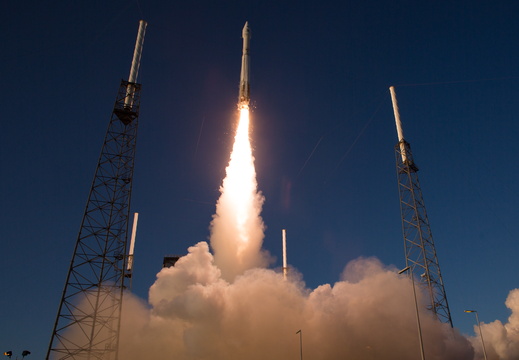
OSIRIS-REx
OSIRIS-REx launched on Sept. 8, 2016, at 7:05 p.m. EDT. As planned, the spacecraft reached its asteroid target in 2018 and will return a sample to Earth in 2023.
NASA's Goddard Space Flight Center in Greenbelt, Maryland, provides overall mission management, systems engineering and safety and mission assurance for OSIRIS-REx. Dante Lauretta is the mission's principal investigator at the University of Arizona. Lockheed Martin Space Systems in Denver is building the spacecraft. OSIRIS-REx is the third mission in NASA's New Frontiers Program. NASA's Marshall Space Flight Center in Huntsville, Alabama, manages New Frontiers for the agency's Science Mission Directorate in Washington.
